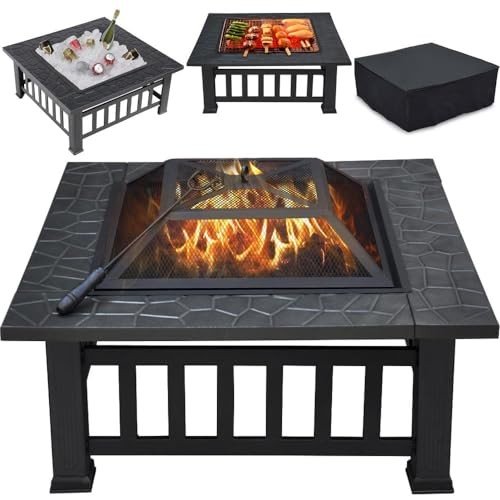12 Companies Leading The Way In Small Fireplaces
A Comprehensive Guide to Small Fireplaces: Efficient Heating and Cozy Living
In an era where energy effectiveness and area optimization are becoming significantly essential, small fireplaces have actually emerged as an appealing alternative to traditional, bulky hearths. These compact heating services provide heat and a focal point for any room, increasing both comfort and visual appeal. This post checks out the various kinds of small fireplaces, their benefits, installation factors to consider, and upkeep ideas, ultimately assisting homeowners make notified decisions when considering these captivating heating choices.
Understanding Small Fireplaces
Small fireplaces provide a range of styles, including electric, gas, ethanol, and wood-burning designs. Each type presents distinct advantages and style possibilities, making them ideal for different living areas.
Kinds Of Small Fireplaces
Fireplace Type
Description
Pros
Cons
Electric
Uses electrical power to produce heat. Offers many designs, including wall-mounted and freestanding units.
- Easy to set up
- Low upkeep
- No venting required
- Limited heat output
- May incur higher electricity expenses
Gas
Burns gas or propane. Typically available as logs in a traditional fireplace or modern designs.
- Efficient heat output
- Cleaner than wood
- Easy ignition
- Requires gas line installation
- Some systems need venting
Ethanol
Burns bioethanol, providing real flames without a chimney.
- Eco-friendly
- Portable
- No installation required
- Limited heat output
- Higher fuel costs
Wood-Burning
Traditional fireplaces that burn fire wood. Typically used in more rustic settings.
- Great heat output
- Rich ambiance
- Can be utilized during power failures
- Requires a chimney
- Regular maintenance and cleaning
Advantages of Small Fireplaces
- Space Efficiency: Small fireplaces are ideal for homes, condominiums, and smaller homes. They optimize heat without taking up extreme flooring space.
- Cost-efficient Heating: In certain cases, small fireplaces can supplement main heating unit, lowering overall energy expenses while producing a more comfy environment.
- Ambiance and Aesthetics: They supply a welcoming centerpiece to a room, developing a cozy atmosphere perfect for relaxation and celebrations.
- Adaptability: Available in various designs and styles, small fireplaces can match any decoration, from modern minimalist to rustic traditional.
Setup Considerations
When pondering a small fireplace, setup is an important aspect that can affect the option of model. Below are useful factors to consider:
- Local Regulations: Building codes can differ by location; always examine regional standards before setup.
- Ventilation Needs: Depending on the type, small fireplaces may need different ventilation systems. Gas fireplaces may need venting outdoors, while electric designs do not.
- Source of power: Electric models require proximity to electrical outlets, while gas and ethanol designs might require a gas line or fuel storage.
- Weight and Structure: Installing wall-mounted systems may need enhanced wall locations, whereas free-standing designs are simpler to transfer.
Maintenance Tips
Like any other home device, small fireplaces require regular upkeep to function efficiently and securely. Here are necessary maintenance ideas for various fireplace types:
For Electric Fireplaces:
- Cleaning: Wipe down the unit with a soft cloth to eliminate dust and keep the heating unit ducts clear.
- Assessment: Check the power cord frequently for any damages or signs of wear.
For Gas Fireplaces:
- Annual Inspections: Schedule annual inspections by a professional to make sure safe gas flow.
- Tidy the Logs: Regularly tidy the burner and logs to keep optimum efficiency.
For Ethanol Fireplaces:
- Fuel Storage: Store ethanol fuel safely far from direct sunshine and heat sources.
- Regular Cleaning: Clean the burner after each use to maintain efficiency and prevent soot accumulation.
For Wood-Burning Fireplaces:
- Chimney Sweeping: Have the chimney expertly cleaned when a year to avoid creosote buildup.
- Firewood Storage: Only use dry, skilled wood to lessen smoke and promote efficient burning.
Frequently Asked Questions
1. Can I set up a small fireplace myself?
While some electric and ethanol fireplaces are fairly easy to set up, it is advisable to hire a professional for gas and wood-burning units to ensure compliance with local building regulations.
2. How Fireplace UK does it cost to run a small fireplace?
The cost will differ depending upon the kind of fireplace. Usually, electric fireplaces may incur higher electrical power expenses, while wood-burning alternatives can draw from renewable fire wood supplies.
3. Do I require a license for setup?
Licenses are typically needed for gas and wood-burning fireplaces due to their installation complexity and safety guidelines. Always contact local authorities.
4. The length of time can I run an electric fireplace?
A lot of electric fireplaces can run for long periods; however, it's suggested to follow producer standards to prevent overheating or harming the unit.
5. What type of small fireplace is best for a small area?
This mainly depends on individual needs. Electric designs are flexible and simple to install, while gas and ethanol alternatives provide genuine flames with efficient heat output.
Small fireplaces represent a functional and trendy option for those seeking efficient heating solutions in compact home. With different types offered, property owners can pick designs that align with their aesthetic preferences and space requirements. By understanding the setup processes and regular maintenance needed, individuals can enjoy the comfort and ambiance that small fireplaces use for years to come. Whether for a cozy night at home or a welcoming area for events, small fireplaces are a long-lasting component of modern and traditional decoration alike.
